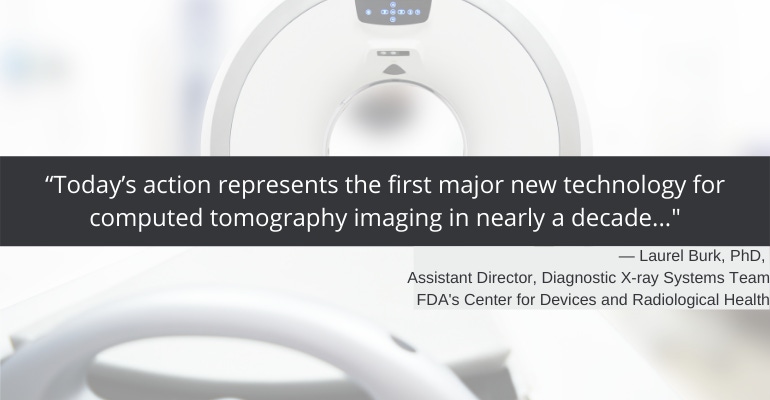FDA is calling the Siemens device the first new major technological improvement for CT imaging in nearly a decade.
September 30, 2021

Siemens just scored FDA clearance for a device that uses the emerging CT imaging technology of photon-counting detectors which can measure each individual X-ray that passes through a patient's body, as opposed to current systems which use detectors that measure the total energy contained in many X-rays at once. By ‘counting’ each individual X-ray photon, more detailed information about the patient can be obtained and used to create images with less information that is not useful in the review and analysis.
“Computed tomography is an important medical imaging tool that can aid in diagnosing disease, trauma or abnormality; planning and guiding interventional or therapeutic procedures; and monitoring the effectiveness of certain therapies,” said Laurel Burk, PhD, assistant director of the diagnostic X-ray systems team in FDA’s Center for Devices and Radiological Health. “Today’s action represents the first major new technology for computed tomography imaging in nearly a decade, and underscores the FDA’s efforts to encourage innovation in areas of scientific and diagnostic progress.”
The new diagnostic imaging device, called Siemens Naeotom Alpha, is designed to transform the information from X-ray photons that pass through a patient's body, and are received by a detector, into a detailed 3D image. The images delivered by the system can be used by a trained physician as an aid in diagnosis, or can be used by trained staff as an aid in diagnosis, treatment preparation, and radiation therapy planning.
FDA reviewed the Siemens Naeotom Alpha through the 510(k) premarket clearance pathway. A 510(k) is a premarket submission made to FDA to demonstrate that a new device is substantially equivalent to a device that is already legally marketed in the United States.
Technological advancements such as this new CT technology are helping to drive demand for the radiotherapy devices market. Newer technology translates into lower-cost, more effective, more efficient, and more user-friendly products with better radiation doses for increased performance in targeting tumors, according to a recent ResearchAndMarkets report. The radiotherapy devices market is is expected to grow from $5.44 billion in 2020 to $5.848 billion in 2021 at a compound annual growth rate (CAGR) of 7.5%.
is anticipated to drive the demand for the radiotherapy devices market. The advancement in technology is helping to develop low-cost, more effective and efficient, and user-friendly products with precise and improved radiation doses for increased performance in targeting tumors.
About the Author(s)
You May Also Like




